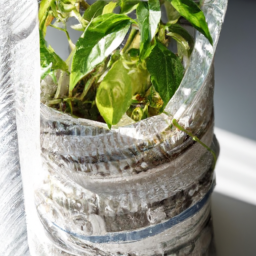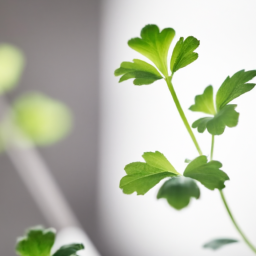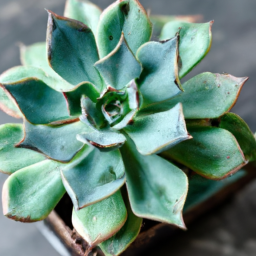
Are you looking to give your succulents the best possible care? One of the most important factors to consider is providing them with the best light for succulents. Succulents are known for their ability to thrive in sunny, bright conditions, but not all light sources are created equal when it comes to keeping these plants healthy and happy. In this blog post, we’ll explore the different types of light that succulents need, how to determine the best light for your specific plants, and tips for ensuring they get the right amount of light to flourish. So let’s shed some light on the best ways to keep your succulents thriving!
Types of Lighting for Succulents: Finding the Best Option
Understanding the Different Types of Lighting
When it comes to growing succulents indoors, providing the right amount and type of light is crucial for their health and growth. There are several types of lighting options available, each with its own pros and cons. Understanding the differences between these types of lighting can help you choose the best option for your succulents.
Natural sunlight is always the best option for succulents, as it provides the full spectrum of light that plants need to thrive. However, not all indoor spaces receive enough natural light to keep succulents healthy. In such cases, artificial lighting can be used to supplement or replace natural light. The most common types of artificial lighting for succulents include fluorescent, LED, and grow lights.
Fluorescent lights are a popular choice for indoor succulent growers because they are affordable and provide a good amount of light for plants. They come in a variety of sizes and colors, with cool white and warm white being the most common options. Cool white fluorescent lights are best for succulents that are actively growing, while warm white lights are better for mature plants or those that are not actively growing.
LED lights are another popular choice for indoor succulents, as they are energy-efficient and produce very little heat. They come in a wide range of colors, including red, blue, and full spectrum options. Red and blue LED lights are often used for growing plants because they are the most efficient at promoting photosynthesis. Full spectrum LED lights, on the other hand, provide a more natural light that is similar to sunlight.
Grow lights are specifically designed to provide the optimal light spectrum for plant growth. They come in various types, including metal halide, high-pressure sodium, and ceramic metal halide lights. Metal halide lights are best for plants that are in the vegetative stage of growth, while high-pressure sodium lights are better for plants that are flowering or fruiting. Ceramic metal halide lights are a newer option that combines the benefits of both metal halide and high-pressure sodium lights.
Factors to Consider When Choosing Lighting for Succulents
When choosing the best lighting option for your succulents, there are several factors to consider. The first factor to consider is the light intensity, which is measured in foot-candles or lux. Most succulents require a light intensity of at least 2000 foot-candles to thrive. The second factor to consider is the light duration, or how long the lights should be on each day. Most succulents require 12-16 hours of light per day to grow properly.
Another factor to consider is the color temperature of the light. Succulents require a color temperature of around 5000-6500 Kelvin, which is similar to natural sunlight. The color temperature of the light can affect the growth and flowering of succulents, so it is important to choose the right color temperature for your plants. Finally, consider the size and shape of your succulent garden when choosing lighting. Make sure that the lights are positioned at the correct distance and angle to provide even coverage for all your plants.
Tips for Using Lighting to Grow Healthy Succulents
To ensure that your succulents receive the right amount of light, it is important to monitor them regularly. Check the color and shape of your plants regularly to see if they are receiving enough light. If your succulents are stretching or becoming leggy, it may be a sign that they are not receiving enough light. In this case, you may need to adjust the position or intensity of your lights.
It is also important to rotate your succulents regularly to ensure that they receive even light exposure on all sides. This will help prevent your plants from becoming lopsided or leaning towards the light source. Additionally, be sure to clean your lights regularly to remove dust and debris that can block the light and reduce its effectiveness.
By choosing the right type of lighting and following these tips, you can create the ideal growing environment for your succulents. With the proper lighting, your succulents will thrive and grow beautifully indoors.
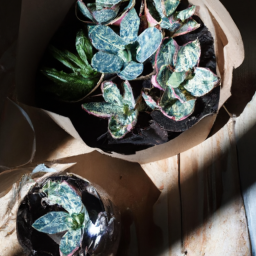
Choosing the Best Grow Light for Your Succulents
When it comes to growing succulents indoors, one of the most important factors to consider is the type of light they receive. Succulents require plenty of sunlight to thrive, but not all indoor spaces provide enough natural light for these plants to flourish. That’s where grow lights come in. In this guide, we will discuss the best types of grow lights for succulents and how to choose the right one for your indoor garden.
Types of Grow Lights
There are several types of grow lights available on the market, each with its own pros and cons. The most common types of grow lights for succulents include fluorescent, LED, and high-intensity discharge (HID) lights.
Fluorescent lights are a popular choice for indoor gardening because they are affordable and energy-efficient. They come in two main types: compact fluorescent lights (CFLs) and tube fluorescent lights. CFLs are suitable for small succulent plants, while tube fluorescent lights are better for larger succulent gardens.
LED grow lights are another excellent option for growing succulents indoors. They are energy-efficient, long-lasting, and produce very little heat, making them ideal for small spaces. LED lights come in a variety of colors, including red, blue, and white, which can be customized to meet the specific needs of your succulents.
HID lights, such as metal halide and high-pressure sodium lights, are the most powerful grow lights available. They produce intense light that is ideal for large succulent gardens or plants that require high light levels. However, HID lights can be expensive to purchase and operate, and they generate a lot of heat, which may require additional ventilation.
Choosing the Right Grow Light for Your Succulents
When selecting a grow light for your succulents, there are several factors to consider, including the size of your indoor garden, the type of succulents you are growing, and your budget. Here are some tips to help you choose the right grow light for your indoor succulent garden:
1. Consider the light intensity: Succulents require bright light to thrive, so choose a grow light that provides sufficient light intensity for your plants. LED lights are a popular choice because they can be customized to meet the specific light requirements of different succulent species.
2. Determine the light spectrum: Different types of grow lights emit different light spectrums, which can affect the growth and flowering of your succulents. For general succulent growth, a full-spectrum grow light is recommended, as it provides a balanced spectrum of light that mimics natural sunlight.
3. Evaluate the light duration: Succulents require a certain amount of light each day to photosynthesize and grow. Most succulents need at least 6-8 hours of light per day, but some species may require more. Consider the light duration and adjust the lighting schedule accordingly to meet the needs of your succulents.
In conclusion, choosing the best grow light for your succulents is essential for their health and growth. Consider the type of light, intensity, spectrum, and duration when selecting a grow light for your indoor succulent garden. With the right grow light, your succulents will thrive and bring beauty to your home all year round.
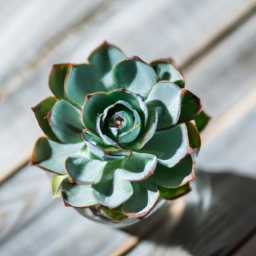
Tips for Selecting the Best Light for Succulents: A Comprehensive Guide
Understanding the Light Requirements of Succulents
When it comes to selecting the best light for your succulents, it’s important to first understand their light requirements. Succulents are plants that have adapted to survive in arid environments with plenty of sunlight. This means that they thrive in bright, indirect light. However, not all succulents require the same amount of light. Some varieties, such as Echeverias and Sedums, prefer full sun, while others, like Haworthias and Gasterias, do well in partial shade.
It’s also important to consider the direction of the light. South-facing windows tend to receive the most sunlight throughout the day, making them ideal for succulents that require full sun. East-facing windows receive gentle morning light, which is perfect for succulents that prefer bright, indirect light. West-facing windows receive intense afternoon light, so be sure to place your succulents a few feet away from the window to prevent sunburn.
If you don’t have access to natural sunlight, you can also use artificial grow lights to provide the necessary light for your succulents. LED grow lights are a popular choice among succulent enthusiasts because they are energy-efficient and produce the full spectrum of light that plants need for photosynthesis. When using grow lights, be sure to position them at the appropriate distance from your succulents to prevent burning.
Choosing the Right Light Intensity for Your Succulents
In addition to understanding the light requirements of your succulents, it’s also important to consider the intensity of the light they receive. Light intensity is measured in foot-candles, with full sun providing around 10,000 foot-candles of light, bright indirect light providing 2,000-5,000 foot-candles, and low light providing less than 1,000 foot-candles.
Most succulents prefer bright, indirect light, which falls in the range of 2,000-5,000 foot-candles. To determine the light intensity in your home, you can use a light meter or simply observe how the light changes throughout the day. If your succulents are not receiving enough light, you may notice them stretching or becoming leggy. On the other hand, if they are receiving too much light, they may develop sunburn or discoloration.
When choosing a light source for your succulents, be sure to consider the intensity of the light it provides. LED grow lights are a great option for providing consistent light intensity, as they can be adjusted to meet the specific needs of your succulents. You can also use a combination of natural and artificial light to ensure that your succulents receive the right amount of light throughout the day.
Creating the Ideal Light Environment for Your Succulents
To create the ideal light environment for your succulents, it’s important to consider the duration of light exposure as well as the quality of light they receive. Succulents typically require around 12-14 hours of light per day to thrive, so be sure to place them in a location where they will receive sufficient light throughout the day.
In addition to the duration of light exposure, it’s also important to consider the quality of light your succulents receive. Natural sunlight is the best source of light for succulents, as it provides the full spectrum of light that plants need for photosynthesis. If you are using artificial grow lights, be sure to choose a light source that mimics natural sunlight as closely as possible.
When creating the ideal light environment for your succulents, be sure to monitor their growth and adjust the light exposure as needed. By understanding the light requirements of your succulents, choosing the right light intensity, and creating the ideal light environment, you can ensure that your succulents thrive and grow healthy and strong.
In Summary
If you’re a succulent lover like me, you know that finding the perfect light for your plants is crucial for their growth and overall health. Succulents thrive in bright, indirect sunlight, so it’s important to choose the right light source to keep them happy and thriving. One of the best options for providing the ideal light for your succulents is natural sunlight. Placing your plants near a sunny window where they can receive at least six hours of sunlight each day is ideal for most succulent varieties.
If you don’t have access to natural sunlight or live in a location with limited sunlight hours, grow lights are a great alternative for providing your succulents with the light they need to flourish. LED grow lights are a popular choice among succulent enthusiasts because they mimic natural sunlight and are energy-efficient. Place the grow lights a few inches above your plants and keep them on for about 12-14 hours a day to ensure your succulents are getting the right amount of light. Remember to rotate your plants regularly to ensure they receive light evenly on all sides and prevent them from leaning towards the light source. With the right light source, your succulents will thrive and bring a touch of greenery and beauty to your space.
Here are this week’s Top Questions and Answers
Q1: What is the best type of light for succulents?
A1: The best type of light for succulents is bright, indirect sunlight. They thrive in areas with plenty of natural light, but direct sunlight for extended periods can cause sunburn.
Q2: Can I use artificial light for my succulents?
A2: Yes, you can use artificial light for your succulents. LED grow lights are a popular choice as they provide the right spectrum of light for optimal growth without producing too much heat.
Q3: How many hours of light do succulents need per day?
A3: Succulents typically need about 6-8 hours of light per day to thrive. If using artificial light, you can control the duration to ensure they get enough light for healthy growth.
Q4: What are signs that my succulents are not getting enough light?
A4: Signs that your succulents are not getting enough light include stretching or elongation of the stems, pale or faded coloration, and a general lack of growth or stunted growth.
Q5: Can I leave my succulents under a grow light 24/7?
A5: It is not recommended to leave your succulents under a grow light 24/7. Like all plants, they need a period of darkness to rest and rejuvenate. Aim for 6-8 hours of light per day and provide darkness during the night for optimal growth.
Dr. Olivia Green is a botanist with over two decades of experience in indoor plant cultivation. She holds a Ph.D. in Plant Biology and has dedicated her career to researching plant behavior in controlled environments. Dr. Green is passionate about helping plant enthusiasts master the art of indoor gardening through her extensive knowledge and practical insights.

